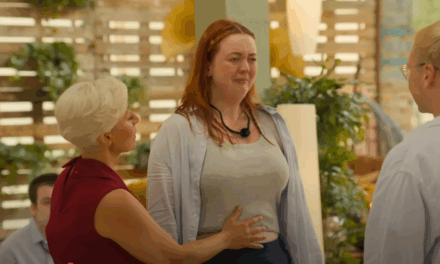‘Performance and Television Space’, a one day symposium held at the University of Glamorgan’s Cardiff School of Creative and Cultural Industries on 20th April 2012, was the second in a series of three conferences organised by the research project ‘Spaces of Television: Production, Site and Style’. This AHRC funded venture, shared between the Universities of Reading, Glamorgan and Leicester, will hold its concluding three-day symposium at the University of Reading in September 2013. In the meantime this research initiative continues to investigate how material spaces of British television productions, in television studios and on location, conditioned the aesthetic forms of television fiction produced in the UK from 1955-93. A number of project contributors presented papers at the ‘Performance and Television Space’ symposium but the programme also drew on a wider resurgence of interest in television performances and how they can be influenced by a number of cultural, institutional and technological contexts and constraints. Organisers were pleased to welcome contributors with backgrounds in either academia or the television industry to help generate new understandings and readings of television history.
Christine Geraghty commenced the event with her keynote ‘Twitchy editing and careening cameras: the presentation of performance in Bleak House (2005)’. Geraghty argued, in terms of the organisation of space, that Bleak House combines soap opera conventions with the language of the classic serial to create an interesting hybrid. Specifically Geraghty believed that the use of handheld cameras and frequent close-ups, a typical convention of the soap opera, added a new dimension to the classic serial performance that is traditionally captured through steady and observant camerawork. The close-ups for Geraghty are an integral element of the Bleak House performances as they draw out nuanced differences between Esther (Anna Maxwell Martin), whose expressions give clarity to her thoughts or responses, and Lady Dedlock (Gillian Anderson), whose enigmatic control of facial expression is designed to deny revelation of her feelings. This method of approaching performance was considered by Geraghty to be at odds with the BBC’s original 1985 adaptation of the Dickens classic, starring Diana Rigg, that placed far more emphasis on the spoken word and a respect for the lavish set designs rather than focusing on characters’ micro-gestures. This issue of hybridity inspired a thoroughly interesting debate that followed on from the keynote and a more detailed version of these discussion points can be found in Geraghty’s forthcoming BFI TV classics publication Bleak House.
Many parallel panels followed exploring the relationship between performance and television space often examining the unique aesthetics of the studio-based performances shot on videotape and the various factors that can be seen to influence the possible meanings derived by audiences. Categorised into ‘Performing Studio Languages and Practices’, ‘Community Performance’, ‘Genre and Performance’ and ‘Theatrical Performance’; the panels offered scope for a broad and wide-ranging exploration of British television fiction as many television performances from 1955-94 were analysed through various methodologies leading to spirited discussions throughout the day.
In ‘Performing Studio Languages and Practices’, David Dunn’s paper entitled ‘Inviting the camera in: the television frame as a space of drama and performance’ reassessed the precise function of the television frame as part of a performance. This was followed by Douglas McNaughton’s paper ‘Performing spaces: the influence of British Actors’ Equity on BBC studio drama’ that argued, through extensive archival research, how the Equity union’s insistence on television performances to be recorded live inhibited narrative and aesthetic possibilities of studio-based drama. Lez Cooke concluded this panel with ‘Spaces of television: the dining room’ where a close textual analysis of a dining room scene from the first episode of Coronation Street (1960-) followed by another analysis of a similar scene in the BBC’s Play for Today Bar Mitzvah Boy (1976) demonstrated how editing, amongst other factors, is an integral part of any television performance albeit beyond the control of any actor.
For ‘Community Performance’ Leah Panos examined the notion of a feminist performance space in ‘Rock Follies: feminism, performance and the television studio’ by analysing how the three main characters of the series are depicted in three different environments; the fantastic, intimate and satirical, as made possible by the unique nature of the television studio. In ‘Relationships between radical black theatre performance and television space as exemplified in Black Feet in the Snow (1974, BBC)’ Sally Shaw explored the intersection between radical black theatre and television drama to examine performance styles and dramatic space across the two media by drawing on archival research and interviews. To finish Julie E. Robinson in ‘“Views from an Iron Bridge”: A Musical World and the performance of Midlands’ regional identity’ analysed the influence a landscape has on the way regional narratives are presented in the series that offered the opportunity for schools to write and perform their own musicals.
‘Genre and Performance’ opened with Richard Hewett’s ‘Adventures in space and time: regeneration performance style in Doctor Who’ that comparatively examined different production processes and their impact on the performance space of the ‘classic’ Doctor Who series and the 2005 re-launch. Billy Smart’s ‘Hunter’s Walk and Juliet Bravo: representing rape in the studio police drama’ was followed by Ben Lamb’s ‘Going undercover: detectives, police officers and the infiltration of criminal spaces’ that examined the layering of performances within the depiction of undercover police work. Lastly Steve Blandford examined the importance of casting in his paper ‘Cracker: performance and casting issues’.
In ‘Theatrical Performance’ Amanda Wrigley’s ‘Performing antiquity: translating Ancient Greek theatre space and practice to the BBC television studio’ explored how three BBC productions of Sophocles’ Oedipus Tyrannus incorporated performance styles of 5th century Athens. John Wyver’s ‘Performance from the Whitehall: the Brian Rix comedies in a “third space” of production’ analysed the largely forgotten live broadcasts made by the BBC from 1952-1969. John Izod’s examination of Brechtian satirical devices in ‘Alienating the audience: The Old Crowd (1979)’ was followed by Patrick Pilkington’s ‘Doubled performances: engagement with notions of the courtroom as stage in the legal drama’ where he looked into the changing role of performance in courtroom space in Rumpole of the Bailey (1978-1992, Kavanagh QC (1995-2001) and Silk (2011-2012).
The symposium concluded with an informal interview between project contributor Billy Smart and well-known veteran television actor Maurice Roëves whose long lasting career has spanned over fifty years in the British television industry. Roëves provided great insight into how the nature of television acting has developed, since the 1960s when performances were recorded live, through fascinating and enlightening anecdotes. To demonstrate the development of Roëves’ career clips from some of his most famous performances were screened to provoke discussion. Notable performances discussed included Roëves’ portrayal of Hitler in the postmodern television play The Journal of Bridget Hitler (1981), Vincent Diver from the BBC Scottish-based comedy Tutti Frutti (1987) and his portrayal of Alexi in The Gambler (1968) alongside actress Edith Evans. In amongst these clips Roëves discussed his influences and the techniques he employed within the different production contexts of the ever changing industry, particularly the transition from drama being shot on video to drama being shot on film, to ultimately provide a thoroughly engaging talk that synthesised many of the themes of earlier papers to draw proceedings to a close in a fitting and thought-provoking manner.
Ben Lamb on behalf of the ‘Spaces of Television: Production, Site and Style’ team: Jonathan Bignell, Stephen Lacey, James Chapman, Billy Smart, Victoria Byard, Leah Panos.
Ben Lamb is a PhD researcher, whose thesis examines the developing aesthetics of British television studio drama, particularly focusing on how certain technologies impacted upon performance styles. Through a genre examination of key police series his thesis aims to ultimately chart how desires, expectations and evaluations of fictional space changed for programme makers, performers and reviewers. The thesis is part of the AHRC funded research project ‘Spaces of television: Production, Site and Style’ that aims to research how the material spaces of production conditioned the aesthetic forms of television fiction produced in the UK from 1955-93.





